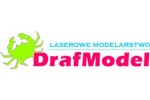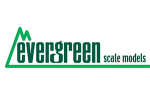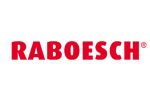As well as the actual gluing of the model, another important element of the build is the shaping and retouching of the model. In this article, we will specifically talk about shaping the bends. There are a number of techniques for paper bending that can be classified into two main groups:
- slicing
- creasing
Along with these two groups there are also two groups of modelers, as each uses a different technique. The main difference in these techniques is the use of different tools. In cutting, we use a scalpel to partially cut the paper to get a straight, sharp bend. While creasing uses a blunt tool (for example, a slightly blunted compass needle) to push the paper through the fold and then bend it. I don't have much experience with this technique, so I won't discuss it further. However, it is worth mentioning that creased folds sometimes need almost no retouching compared to incised folds, which always need it.
As mentioned, I personally prefer the scoring technique, so this article is devoted solely to it. The cutting is done on a cutting mat (old lino can be used, but it must be hard PVC, not modern foam). In my opinion this is a more demanding technique, but I like the result better. The difficulty lies mainly in the changing properties of the scalpel blade. While a new blade is very sharp and does not need to be pressed, over time the pressure needs to be changed as the blade wears. The second related problem is the depth of cut. If the part is cut too small, the bend is difficult to work with and the core of the bend starts to crack. After retouching, we usually end up with a hairy - not very aesthetic - bend. The other extreme is too much pressure on the knife. This leads to over-cutting and usually results in the part falling apart at the bend. Then we have to glue the part back together at the bend. This way the glued bend is never as clean as the bend itself. It is therefore advisable to try cutting on a piece of scrap paper from the model first and then move on to cutting the parts.
The bends are marked with the appropriate marks. In the picture you can see the part where you cut the face of the part and bend it away from you.



In the second case, we transfer (for example, by piercing with a pin) the marks to the reverse of the part and cut from the reverse. The bend is then made towards you.





This brings us gradually to the retouching of the model. Retouching is usually done with water-based paints. Ordinary water colours will also do. Tempera paints are also a good choice. These have one big advantage. Once dry, they can be used in the same way as water colours. So you can mix colours in cups or on a palette, which you can use throughout the entire model building process and thus have a guaranteed constant shade of retouching. Another advantage of tempera paints prepared in this way is much greater coverage than water colours. It is not a good idea to rush the mixing of colours, as the right shade of retouching can either raise the model a level higher or completely devalue it.

Apply the colours prepared in this way to the parts of the model. Retouch both the edges of the carved part and the bends. For the bends we have again two options. There are modellers who retouch after gluing the parts together. I don't recommend it, as there is a big risk that the paint will spill into the surroundings and irreversibly stain the part. A better option is retouching before gluing, when the part is bent 180° and the edge is comfortably retouched. Pay attention to the amount of water on the brush. Too much water increases the risk of paint running off the bend and damaging the piece. Another advantage of this procedure is the perfect colouring of the bend. This prevents the bend from not being fully painted and distracting white areas from shining through.



We paint non-paper parts with model paints. Nowadays, both water-based acrylic paints and synthetic paints can be used. The choice of which way to go is up to each modeler. I personally use acrylic paints as they are easy to work with. They cover well, dry quickly and unlike synthetics there is zero odor. Also, the equipment doesn't suffer as much - for example, brushes last much longer.










